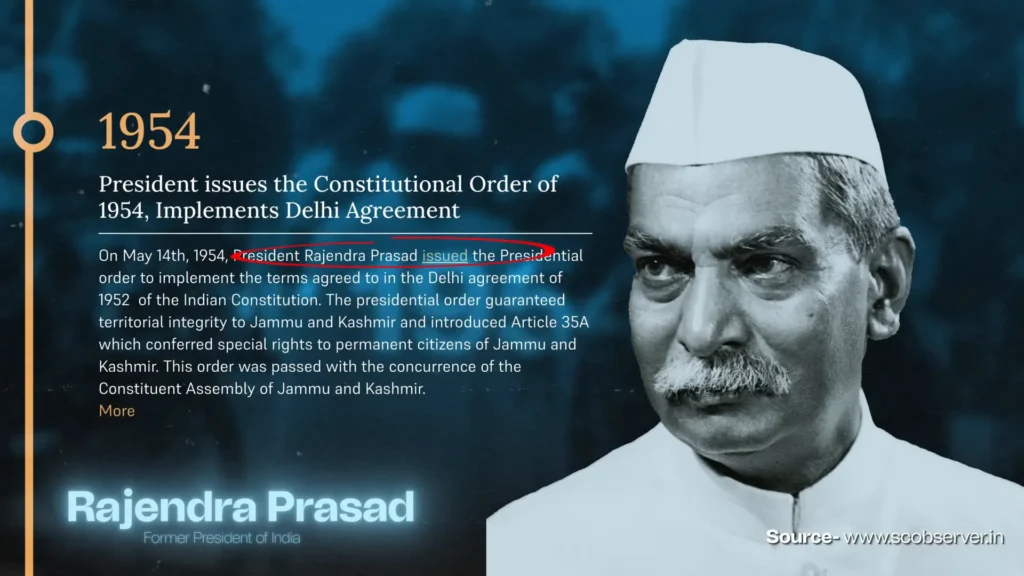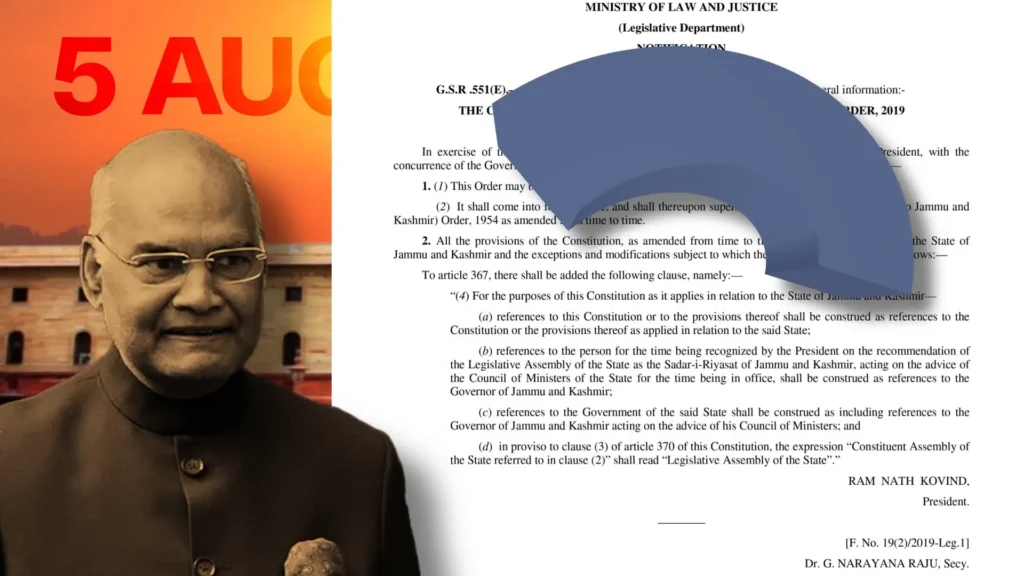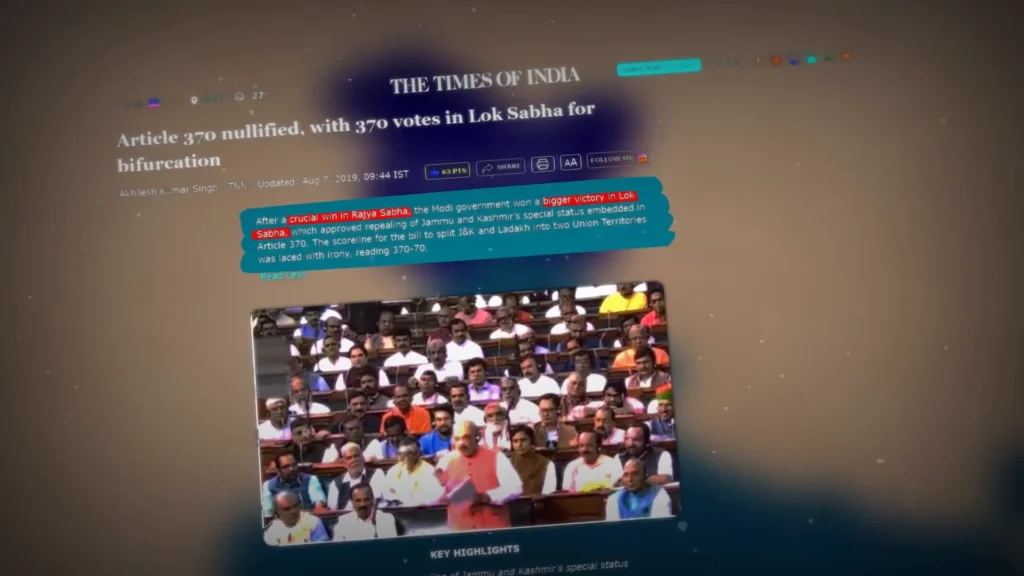The Complex Legacy of Article 370: Understanding Its Historical Context and Impact
Article 370 of the Indian Constitution has been a pivotal element in the political landscape of Jammu and Kashmir since its enactment in 1949. This article provided the region with a unique status, allowing it to have its constitution, flag, and governing authority while limiting the central government’s jurisdiction to defense, foreign affairs, and communications. The planning of Article 370 removal in August 2019 not only altered the political dynamics of Jammu and Kashmir but also sparked widespread debate and controversy. In this blog, we will explore the historical context of Article 370, its implications, and the ongoing discourse surrounding its removal.

Historical Background of Article 370
The roots of Article 370 can be traced back to the India Independence Act of 1947, which led to the partition of British India into India and Pakistan. The princely states, including Jammu and Kashmir, were given the option to join either nation. On October 26, 1947, the Maharaja of Jammu and Kashmir signed the Instrument of Accession to India, which allowed the Indian government to handle defense, foreign affairs, and communications for the region.
This decision was not without controversy. In response to the Maharaja’s decision, Pakistan launched military operations to claim the territory. The conflict culminated in the first Indo-Pak war, which ended with a ceasefire brokered by the United Nations and the establishment of the Line of Control (LoC) in 1949. The situation laid the groundwork for the unique status that Article 370 would confer upon Jammu and Kashmir.
The provisions of Article 370
Article 370 included several provisions that were designed to protect the rights and identity of the people of Jammu and Kashmir. The article allowed the state to have its constitution and granted it the autonomy to legislate on all matters except defense, foreign affairs, and communications.
One crucial aspect of Article 370 was its temporary nature. Initially, it was meant to be a provisional arrangement until the state could establish a permanent constitution and governance structure. However, over the decades, it became a contentious issue, with various political parties and groups either supporting or opposing its existence. The planning of Article 370 removal was seen by some as a necessary step toward integration.
The Role of Article 35A
Article 35A, which was introduced through a presidential order in 1954, complemented Article 370 by allowing the Jammu and Kashmir legislature to define permanent residents of the state. This article prohibited outsiders from settling in Jammu and Kashmir, thereby protecting the local population’s rights and identity.
However, Article 35A also faced criticism, especially from nationalists who argued that it discriminated against non-residents and women, particularly in cases where local women married outside the state. The debate surrounding Article 35A further fueled tensions in the region, influencing the planning of Article 370 removal.

Challenges and Controversies Surrounding Article 370
Over the years, Article 370 has been the subject of numerous controversies. Critics argue that it perpetuated separatism and hindered the integration of Jammu and Kashmir with the rest of India. Supporters, on the other hand, maintain that it was essential for preserving the region’s unique identity and protecting the rights of its residents.
The political landscape in Jammu and Kashmir has also been influenced by the actions of various governments. The imposition of President’s Rule, political instability, and frequent changes in governance have contributed to a climate of uncertainty and unrest, leading to discussions around the planning of Article 370 removal.
The Abrogation of Article 370
On August 5, 2019, the Indian government announced the abrogation of Article 370, a significant outcome of the long-standing planning of Article 370 removal. This move led to substantial changes in the constitutional status of Jammu and Kashmir. The action was met with a mix of celebrations and protests across the country and the region. The government argued that the abrogation would lead to greater integration and development in Jammu and Kashmir, while opponents viewed it as a violation of the region’s autonomy.
The abrogation also involved the bifurcation of the state into two Union Territories: Jammu and Kashmir, and Ladakh. This decision further complicated the political dynamics and has led to ongoing debates about the future of governance in the region, all rooted in the planning of Article 370 removal.
Implications of the Abrogation
The removal of Article 370 has had far-reaching implications for the people of Jammu and Kashmir. One major concern is the potential demographic change, as the abrogation allows non-residents to acquire property and settle in the region. This has raised fears among the local population about losing their identity and rights Planning of Article 370 Removal.
Additionally, the abrogation has led to increased military presence and restrictions on communication in the region, impacting daily life and freedom of expression. The ongoing political situation remains tense, with various groups advocating for the restoration of Article 370 or greater autonomy, highlighting the consequences of the planning of Article 370 removal.

The Path Forward: Reconciliation and Dialogue
As the situation in Jammu and Kashmir continues to evolve, there is an urgent need for dialogue and reconciliation. Addressing the concerns of the local population and fostering an environment of trust and cooperation is essential for long-term stability in the region.
Engaging with various stakeholders, including local leaders and communities, can help bridge the divide and pave the way for a more inclusive governance framework. The future of Jammu and Kashmir will depend on the ability of the Indian government to balance national interests with the aspirations of the people in the region, a challenge closely tied to the planning of Article 370 removal.
Conclusion
Article 370 has been a significant aspect of Jammu and Kashmir’s history, reflecting the complexities of regional politics and identity. The planning of Article 370 removal marked a turning point in the relationship between Jammu and Kashmir and the rest of India, raising critical questions about governance, rights, and identity.
